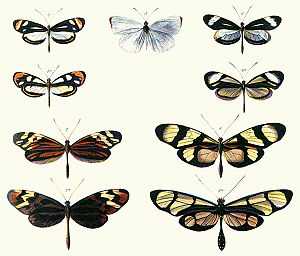Fibulorhizoctonia
| Fibulorhizoctonia | |
|---|---|
| Scientific classification | |
| Kingdom: | Fungi |
| Division: | Basidiomycota |
| Class: | Agaricomycetes |
| Order: | Atheliales |
| Family: | Atheliaceae |
| Genus: | Fibulorhizoctonia G.C.Adams & Kropp (1996) |
| Species | |
|
F. carotae | |
| Synonyms | |
|
Fibularhizoctonia G.C.Adams & Kropp (1996) | |
Fibulorhizoctonia is a genus of fungi in the Atheliaceae family. The genus, circumscribed in 1996,[1] contains three widespread species that are anamorphs of Athelia.[2] It is commonly known as the "cuckoo fungus"[3] because it makes sclerotia, also called "termite balls," which mimic termite eggs.[4]
References
- ↑ Adams GC, Kropp BR. (1996). "Athelia arachnoidea, the sexual state of Rhizoctonia carotae, a pathogen of carrot in cold storage". Mycologia 88 (3): 459–72. doi:10.2307/3760886.
- ↑ Kirk PM, Cannon PF, Minter DW, Stalpers JA. (2008). Dictionary of the Fungi (10th ed.). Wallingford, UK: CAB International. p. 257. ISBN 978-0-85199-826-8.
- ↑ Matsuura K, Yashiro T, Shimizu K, Tatsumi S, Tamura T. (2009). "Cuckoo fungus mimics termite eggs by producing the cellulose-digesting enzyme beta-glucosidase". Current Biology 19 (1): 30–6. doi:10.1016/j.cub.2008.11.030. PMID 19110429.
- ↑ Dunn R. (18 February 2012). "By looking carefully, Japanese scientist discovers the secrets of termite balls". Scientific American. Retrieved 2012-02-24.
External links
| ||||||||||||
